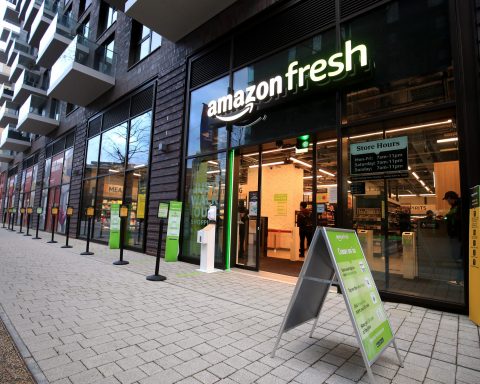Canva, the graphic design platform loved by millions of users worldwide, has found itself at the center of a storm. After announcing a major price hike—in some cases as much as 300%—the company has faced fierce backlash, particularly from small business owners and freelancers who have long relied on its affordability and simplicity. While Canva has justified the increase by citing its growing suite of AI-driven tools, many users are left questioning whether these new features justify the steep cost.
With the rise in prices and the introduction of AI-powered tools such as the Magic Studio, Canva has sparked a fierce debate over the value of technology, the future of design, and whether small businesses can keep up in an increasingly tech-driven world.
The Massive Price Hike: A Game Changer
Canva’s price increase has shocked many users who had grown accustomed to its affordable pricing. In the U.S., the cost of Canva’s Teams subscription has jumped from $120 per year to a staggering $500 annually, while Australian users have seen the price leap from $480 AUD to $2,430 AUD for five users. This eye-watering hike has caused outrage, with many small businesses and freelancers feeling priced out of the platform.
Veronique Palmer, a small business advocate and long-time Canva user, encapsulated the sentiment of many in a recent post: “Huge Canva price hike! It seems to be the MO of the tech giants now. They’ve over-invested in AI and now expect the public to foot the bill. I think those execs are missing something fundamental. The creative ability is core to who we are as human beings. We need to use our brains to make pretty things, to write, to build. AI has some advantages to the man on the street I suppose, but we as a species are meant to create. Why should we be forced to pay for something we don’t use on this platform?”
Palmer’s frustrations are not isolated. Canva has long been seen as an affordable alternative to more expensive design platforms like Adobe, and many users feel that the sudden price increase has turned the platform into something inaccessible to the small businesses and freelancers who made it popular in the first place.
Small Businesses on the Brink
For small businesses, the steep price hike is more than just an inconvenience — it’s a potential financial burden that could push them away from Canva altogether. Many small business owners have voiced their frustrations online, with some announcing plans to cancel their subscriptions or downgrade to Canva’s Pro plan to avoid the increased costs.
Charley Bradbury, a virtual assistant who relies heavily on Canva for her business, expressed her concerns: “Did anyone else get a nasty surprise from Canva yesterday? I ended up downgrading the account for one of my clients. Small business owners simply cannot afford these price hikes. Let’s watch this space to see what functionality we lose over the coming months.” Bradbury’s story is becoming increasingly common as more users adjust their subscriptions or look for alternatives in the face of Canva’s new pricing model.
Canva’s Teams subscription was designed to help businesses collaborate and create designs more efficiently. However, with prices now starting at $10 per user per month — and a minimum of three users required for the Teams plan — small businesses are questioning whether they can justify the cost. Many are turning to Canva Pro as a more affordable option, but even that has left some users frustrated.
Penelope Silver, a social media manager, explained: “Canva Teams now costs $10 per user per month. This means small businesses are hit hard. The cost jumped from $119.99 to $300 in the first year, then $500 annually. Canva says it’s due to new AI features like Visual Suite and Magic Studio, but this aggressive pricing strategy has led to frustration and cancellations from long-time users.”
Silver’s experience is not unique. The steep price increase has sparked a broader conversation about the sustainability of subscription-based software for small businesses and the role AI features should play in determining pricing.
The AI Factor: Is It Worth the Cost?
At the heart of the price increase is Canva’s investment in artificial intelligence. The company has rolled out a number of AI-powered features, such as Magic Studio, Magic Media (a text-to-image generator), and Magic Expand (a background extension tool). These tools, according to Canva, are part of a broader transformation of the platform from a simple design tool to a comprehensive creative workspace.
However, many users feel that these AI tools do not justify the dramatic price increase, particularly for businesses that don’t rely on AI for their design work. Jennifer B., a senior marketing consultant, summed up this sentiment: “I have found their AI hinders what I actually need to get done and has yet to deliver any time savings. I would be happier if they simply took it away.”
This disconnect between Canva’s vision for its platform and the needs of its users has created a rift in the community. While some users appreciate the innovation and potential of AI-driven tools, many feel that they are being forced to pay for features they neither want nor need.
Stewart Marshall, a software industry advocate and bestselling author, offered a contrasting view: “When it comes to value, the user is blind. Of course, never mind that they’re getting massive value for a little over $10/user/month. And never mind that they pay tens of thousands to put a user’s bum on a seat for the year in the first place. Nope. It’s the few extra bucks they now have to spend to support their massively expensive resources that’s the problem.” Marshall’s argument highlights the divide between those who see value in Canva’s AI offerings and those who view the price hike as an unnecessary burden.
A Divided User Base
The response to Canva’s price increase has been divided, with some users defending the platform’s decision while others feel betrayed by the sudden hike. Stewart Marshall defended Canva’s pricing strategy, pointing out that the platform still offers significant value compared to its competitors: “Let’s compare to some competitors: Adobe Express is $9.99 per month for a seat, which is $119.88 per year. Multiplied by five seats in the $500 example reported, that’s $599.40 per year. At the increased rate, Canva is still a 16.5% discount to their nearest UX/content competitor. Based on these figures, the pricing change seems enormous because of the deep discounting that had previously been offered, but in reality, it’s just an increase bringing the Canva pricing in line with the rest of the market.”
However, not everyone agrees. For many users, the price increase feels like a betrayal of Canva’s original mission to provide affordable, easy-to-use design tools. Ivan Ilves, a systems expert and AI practitioner, criticized Canva’s decision in a recent post: “Price hike alert 🚨 Canva just dropped a bombshell on its users with a price increase of up to 300% for its Canva Teams subscription. Small businesses are freaking out. Chalk it up to their investment in flashy new AI design tools and a slick platform redesign… Is Canva’s shiny new tech worth the squeeze, or are they just squeezing small businesses dry?”
The debate over Canva’s pricing strategy has created a clear divide within its user base, with some defending the company’s move as a necessary step to keep up with competitors and others feeling alienated by the steep increase.
The Search for Alternatives
As the debate over Canva’s price hike continues, many users are beginning to explore alternative platforms. Adobe Express, Pixlr, and even free design tools like GIMP have emerged as potential substitutes, though none offer the exact same combination of features that Canva provides.
Stefan G. Bucher, a longtime user of design tools, explained his frustration with Canva’s new pricing: “You can make the value argument all day long, but if you sell something for $100 and then suddenly raise the price to $300, people are gonna get mad. And if you don’t want to keep offering the existing product at $100 with an optional $300 tier offering greater value, maybe it’s because you realize that most people are perfectly satisfied with the $100 tier and you can only move them up to $300 by forcing them.”
Similarly, Lincoln Tsang, a digital media specialist, argued that Canva should prioritize customer loyalty over short-term profit: “They should just eat the cost now in order to keep customer loyalty. All this does is drive others to other products that amalgamate the same thing as Canva but at less cost — sure, you’ll end up using three programs instead of one, but the bottom line is always the price of how much we will pay for the productivity we want to achieve.”
Many users, like Patricia H., are actively searching for alternatives: “I haven’t found the right alternative to Canva, but I’m on the hunt for one.” Patricia’s experience underscores the growing frustration among users who feel that Canva’s price hike has forced them to consider other options, even if those alternatives lack the convenience and functionality that Canva once provided.
What’s Next for Canva?
As Canva faces backlash from its user base, the company finds itself at a crossroads. Will it continue to prioritize AI-driven innovation at the expense of its affordability, or will it find a way to strike a balance between value and cost? For many users, the future of Canva depends on how the company responds to the growing discontent among small businesses and freelancers.
Ryan S., a social media strategist, captured the essence of the debate in a recent post: “Small businesses are often the backbone of these platforms, and price hikes can really hurt. Canva has always been a valuable tool for creators, but it’s tough to justify such a steep increase. Hopefully, they listen to their core users and find a better balance.”
As the dust settles from this pricing controversy, one thing remains clear: Canva’s future will be shaped by how well it listens to its users and how it adapts to the changing landscape of design software. Whether the company can maintain its place as a leader in the industry or risk losing its loyal user base to competitors remains to be seen. But for now, many small businesses and freelancers are left wondering if Canva is still the affordable, user-friendly platform they once loved.








